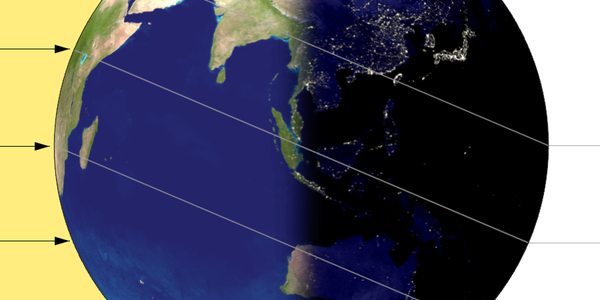Climate science
-

Since we have been talking about the possibility of different types of winter weather, here are a couple of articles that you might appreciate describing the different types of wintry precipitation we can see (all of which will probably occur somewhere in the Southeast in the next two days) and a history of some extreme…
Posted in: Climate science -

The earth experienced the winter solstice early in the morning on December 21, marking the day when the sun appears to be the lowest in the sky before it starts gradually climbing again. The days will start to increase in length again by a few minutes a day as we head through winter and towards…
-

December 1st marks the beginning of winter according to climatologists and meteorologists. It was originally done by whole months because it was easier to do the statistical calculations by hand if entire months were used rather than the changing dates of the astronomical seasons, but it turns out that climatological seasons match better with the…
-

Do you understand how to interpret NOAA’s monthly and seasonal climate outlooks? They are not based on the strength of the departure from normal conditions but describe the probability of the direction of the swing. This is commonly misunderstood by many people who try to use them. You can read a good explainer at https://www.climate.gov/news-features/understanding-climate/understanding-noaas-monthly-and-seasonal-climate-outlooks.
Posted in: Climate science -

Atmospheric rivers are narrow bands of intense water vapor transport that can form over the ocean and direct massive amounts of water towards the land. The results of this high-density flow of water are precipitation events which drop very large amounts of rain in a short time period, leading to flooding, landslides, and other extreme…
-

According to the National Hurricane Center, Hurricane Milton made landfall just south of Sarasota FL at 8:30 pm EDT on October 9 as a category 3 hurricane. It had reached category 5 earlier today after going through an eyewall replacement cycle last night and re-intensifying, but increased wind shear and drier air being pulled into…
-

We don’t often get really big hail in the Southeast, but sometimes it can reach a couple of inches in diameter. That can do a lot of damage to cars, buildings, and trees. But even small hail can cause problems for agriculture, since it can damage crops or damage crops like peppers, making them unsuitable…